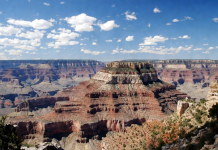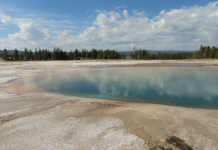Grizzly bears removed for livestock depredations. Two grizzly bears were removed last month due to cattle depredations in southwestern Montana.
One bear was killed in the Gravelly Mountains after several instances of sheep depredation. These conflicts happened despite multiple attempts to avoid them, including guard dogs, moving sheep to new areas, and hazing the bear.
The second bear was killed on private land in the Paradise Valley south of Livingston after chronic cattle depredations. The landowner moved cows twice, but conflicts continued.
The U.S. Department of Agriculture’s Wildlife Services removed both bears on Aug. 21 in consultation with the U.S. Fish & Wildlife Service and Montana Fish, Wildlife & Parks.
Specialists with FWP and Wildlife Services work to help landowners, producers and communities avoid bear conflicts. Promptly reporting bear conflicts can make a difference for the health of the bear and the safety of communities. Some corrective management efforts, when applied early, can be effective in discouraging bears from being close to humans and livestock and reduce future conflicts.
To report bear conflicts, contact your local bear specialist at the phone number listed on FWP’s website: https://fwp.mt.gov/conservation/wildlife-management/bear/contact.
FWP Guidance for Livestock Owners, Homeowners and the General Public
“Grizzly bears are listed as Threatened under the Endangered Species Act (ESA). As such, harassing, harming, pursuing, hunting, shooting, wounding, killing, trapping, capturing, or collecting grizzly bears is not permitted except for self-defense or in defense of others, as authorized by the grizzly bear 4(d) rule. Harass in the definition of “take” in the ESA means an intentional or negligent act or omission which creates the likelihood of injury to wildlife by annoying it to such an extent as to significantly disrupt normal behavioral patterns which include, but are not limited to, breeding, feeding, or sheltering.”
“Grizzly bears can pose a threat to human safety and should be discouraged from using areas near homes and other human-occupied areas. Hazing discourages undesirable behavior in wildlife, and when properly conducted, does not create a likelihood of injury to grizzly bears to such an extent as to significantly disrupt normal behavioral patterns.” — FWP Guidance Report
sourced – Montana Fish, Wildlife & Parks – Sep 11, 2024






